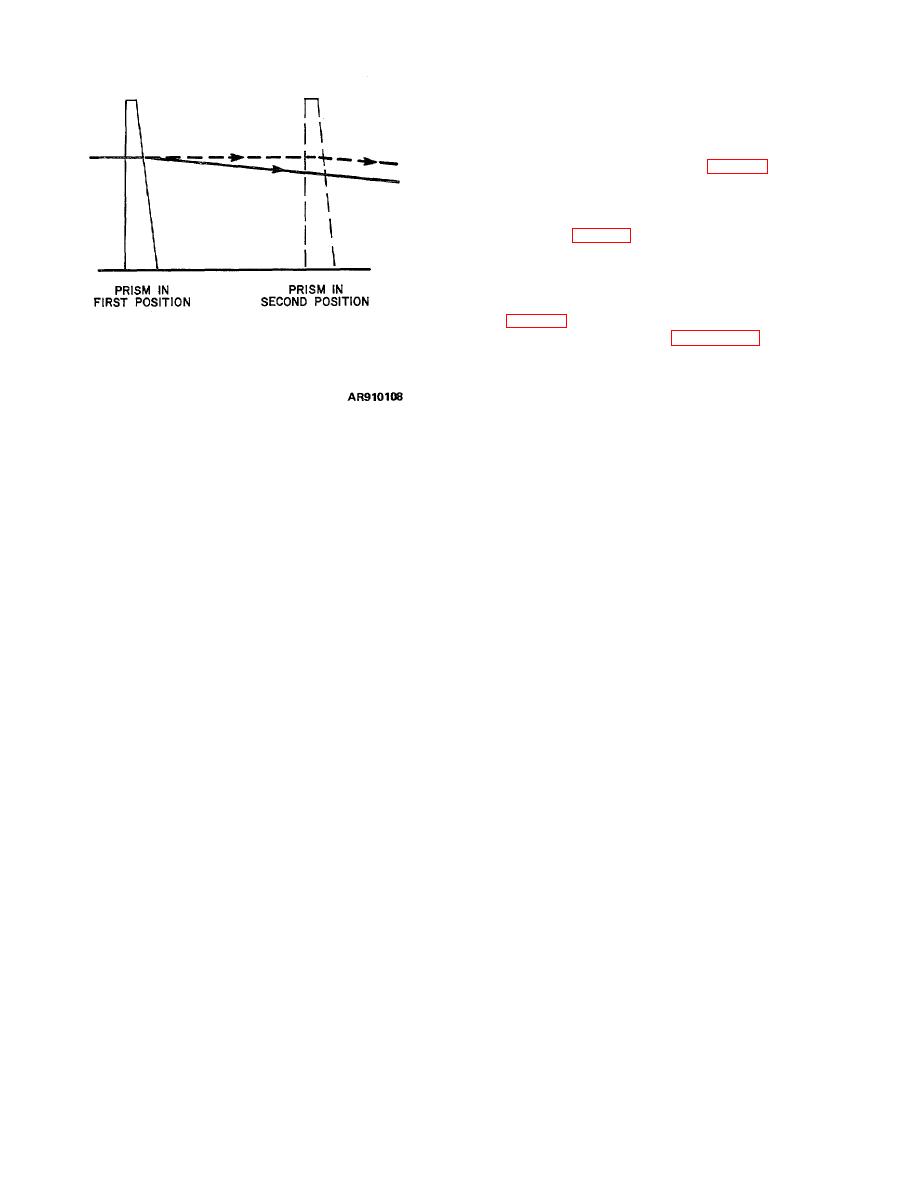 |
|||
|
|
|||
|
Page Title:
Figure 4-18. Extent of displacement of light may be change by movement of wedge |
|
||
| ||||||||||
|
|
 TM 9-258
f. Another means of varying the path of light is
through the use of pairs of wedges which are geared to
rotate in opposite directions. The wedges of such a
system are referred to as rotating wedges or rotating
compensating wedges. When the thicker edges of two
of these wedges are together (A, fig 4-19), they produce
a deviation twice that of one wedge and in the direction
of the thicker edges of the wedges. When rotated until
the thick edge of one wedge is toward the thin edge of
the other (B, fig 4-19), the wedges neutralize one another
and the wedges produce no deviation. Intermediate
positions cause a deviation which increases as the thick
edge of one wedge rotates farther from the thin edge of
the other. When both wedges are rotated through 180ƒ
(C, fig 4-19), the thick edges again are together and the
wedges function as in A, figure 4-19, except in the
opposite direction.
Figure 4-18. Extent of displacement of light may be
changed by movement of wedge.
4-20
|
|
Privacy Statement - Press Release - Copyright Information. - Contact Us |